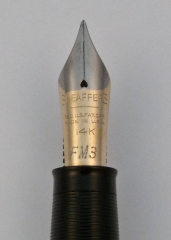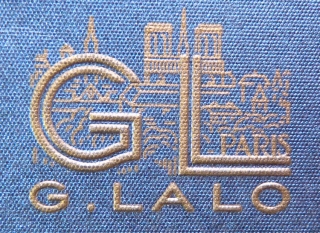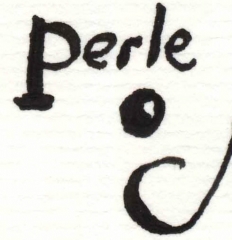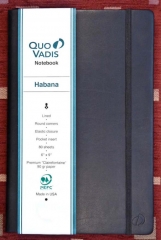However, the question is not about ink so I’ll leave it till the end.
C12
We all know carbon since it’s everywhere around us which makes sense since it’s the fourth most common chemical element in the universe. In fact you’re not seeing it right now in front of you since the atmosphere surrounding us contains carbon (apologies to those who live in a vacuum). Burn something and you’ll often find a black carbon residue which if you are making toast doesn’t taste very good. The smelly, thick smoke you see coming out of diesel cars and trucks is exhaust gas laden with microparticles of carbon. If you’ve drawn with charcoal you’ve actually drawn with carbon. While on the subject of making marks pencil “lead” is actually graphite mixed with clay and graphite is carbon.
Ink
Now that we segued into writing implements we can talk about the fun stuff in our pens: ink. Just about all fountain pen inks are dye based and these colorants are soluble in water resulting in a solution which has no solid bits in it. Is this bringing back any memories of high school chemistry yet? There are complex formulas about how to mix these dyes to make certain ink colors along with additives to promote the inks longevity and stability. This, however, is out of the scope of this post. Whew! I was worried there for a minute.
The other way to get color into a liquid is by adding a pigment. Despite the name there is nothing porcine about it. A common pigmented liquid is paint which gets its color from having little teensy tiny colored bits (the pigment) added to a carrier. Pigments remain in this heterogeneous fluid as solid particles that don’t dissolve which is known as a suspension (more high school chemistry I’m afraid). When pigmented fluids with a binder are used on a substrate like paper the particles get all tangled up in the fiber and stay put on the surface really well. But don’t run out and put an ink that is made like paint into your fountain pen just yet since those are a big no-no in these. The particulates tend to build up and clog the passages that ink travels through and soon your favorite pen is just a short stick with a pointy end.
After wading through all this I assume you are wondering what the point is. Well, what if you could have the positives of a pigment based ink without the negatives? Wouldn’t that be great? Our friend carbon can be refined into very, very tiny particles which theoretically shouldn’t clog a fountain pen and are very black. With that in mind both Sailor and Platinum in Japan have developed fountain pen safe fluid using this technology creating a new category of ink: carbon black.
Testing
Recently one of my favorite people was super nice (thanks Mia!!) and gave me both a bottle of the Platinum carbon black and a sample of the Sailor version of the same. I immediately wondered how they performed especially if compared to each other and a traditional dye based black ink. Since I like to answer obscure questions I did a few tests to determine the shades of grey among black inks.
As a control ink I chose J. Herbin’s Perle Noire black since it is rich, dark, and performed well for me. These attributes made it a good representative sample of dye based inks in this color. The paper I conducted just about all the tests on is my favorite and oft used Clairefontaine 90g gridline white pad.

Deciding on what pens to have in this test was a bit harder. First I wanted them to be of the same construction with similar nibs. Next I didn’t think it would hurt to try a pen with a delicate filling and feed system to give the ink a fighting chance of causing some kind of havoc if so inclined. In the end I didn’t have three identical pens but I did have three that were greatly similar with wide, wet nibs that would allow the ink to boldly go onto the paper like no ink had gone before (forgive my lapse into Trek there). Sheaffer Snorkels were my test instruments sporting a stub, a right oblique, and left oblique nibs. An additional plus was that the Snorkel has a rather tricky ink delivery system which met my requirements on the second point. I’ve shown these pens in the image above. Don’t forget to click on this and all of the following ones to see them larger.
Writing

I filled the pens and it seemed to me that the carbon inks were a bit thinner. That impression is of course subjective but I can state that the flow quality was very good. All three inks wrote well and there was no way to tell which was which by feel. If you look past my lousy handwriting you’ll see that the two inks in question allowed me to form words and lines without any injury or unexpected explosions. Score one for them!
None of these inks had any bleedthrough on the Clairefontaine paper even though the pens were not stingy in their application of the dark liquids. Drying time was rather quicker for the carbon blacks than for the J. Herbin.
Color

Scanning in ink samples is never perfect but I think if you look closely you can see that the Sailor and Platinum lines I wrote (really scribbled) on the sample sheet are not as dark as the Perle Noire. I couldn’t see much difference between the two carbon inks and both seemed greyer in tone than blacks I used normally.
I did a swatch of the three subjects to get a better idea of depth of color. What is seen indeed supports my observation that the carbon black inks are not incredibly dark. To me it seems that the Platinum is darker than the Sailor but if so it’s a very small difference.
Sponge

One thing advertised about the pigmented carbon inks is that they are “permanent”. I always say nothing is permanent and I think a single match would make a mockery of writing fluids that claim. Barring that how does one determine this in normal circumstances? I can’t wait around for 10, 5, or even .001 years to see if time takes a toll and fades the written pages but I can subject them to a bit of torture.
In this test I took a piece of the sturdy Clairefontaine paper and wrote some line and text on it in the three inks. After a few hours of drying time I took a damp sponge and ran it across them all in one swipe. The results show that the carbon based inks are pretty good at resisting running. The winner was the Platinum ink but the Sailor certainly wasn’t bad.
Soak

As long as we’re doing the tests aquatic I decided to give the inks a real workout. In this case I wrote in each ink on the Clairefontaine paper and let them dry an hour before trying the traditional method for determining if a person is a witch. This page was put underwater for 15 minutes and agitated about every minute. When done the sheet was left to dry and you can once again see the lines that held up best were written with the carbon blacks.
Feathering
To conclude this exercise I drew three lines in each ink next to each other not only on my trusty Clairefontaine paper but also on a more absorbent piece of Doane 20lb. The latter paper is typical of what you find in most pads (minus the grid/line layout, of course) and while not ideal for fountain pens it’s good for this test. The results look to me like feathering is minimal on the carbon inks although the Platinum seems to show a bit more than the Sailor. The traditional J. Herbin ink feathers a good deal on the lower quality paper. You can also see the relative blackness of these inks in these samples and Perle Noire most certainly is darkest, like being in a locked closet, compared to the others which are only dark in a waning crescent moon at night way.
So what?
What did we find out? The biggest negative is that Sailor and Platinum carbon black are not as dark as traditional dye based inks. However, this might be made up for by a number of strengths they show such as quick drying time, good permanence in moist conditions, and little feathering. At least they function like a normal ink in the pens I’ve used so I won’t be staying up at night with nightmares of clogged feeds in my head. One last item is that I found Platinum listing a pigment based blue ink on their website. I don’t know anything about it or where it can be bought but it is intriguing and I’d love to give it a try in the future.
The question that the title of this post refers to is: “What was Han Solo encased in for his delivery to Jabba the Hutt?” Was it worth the wait or did you skip down to look at this out of curiosity?


























